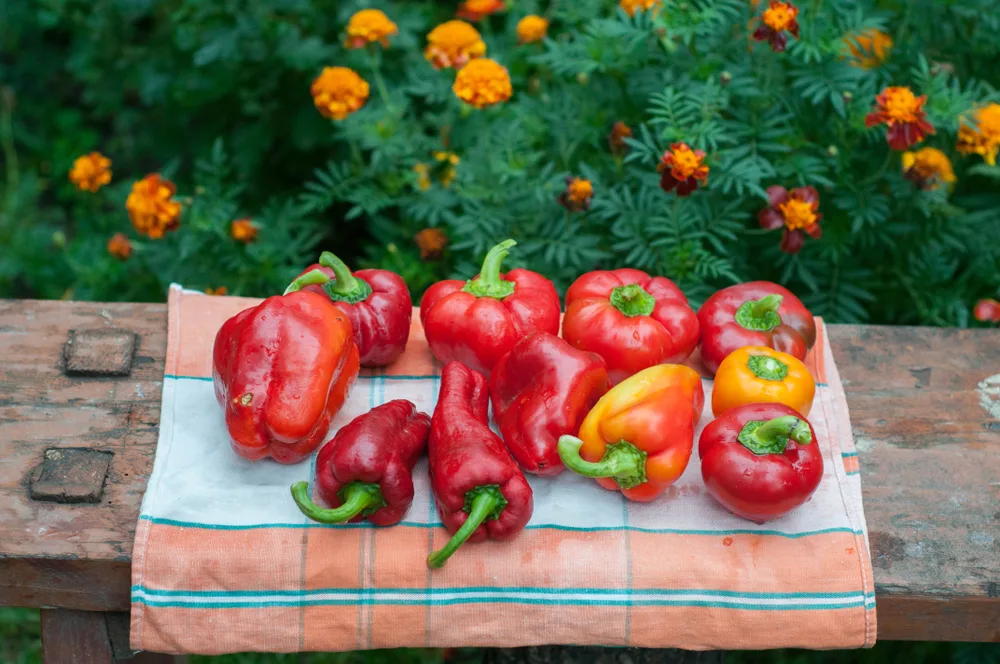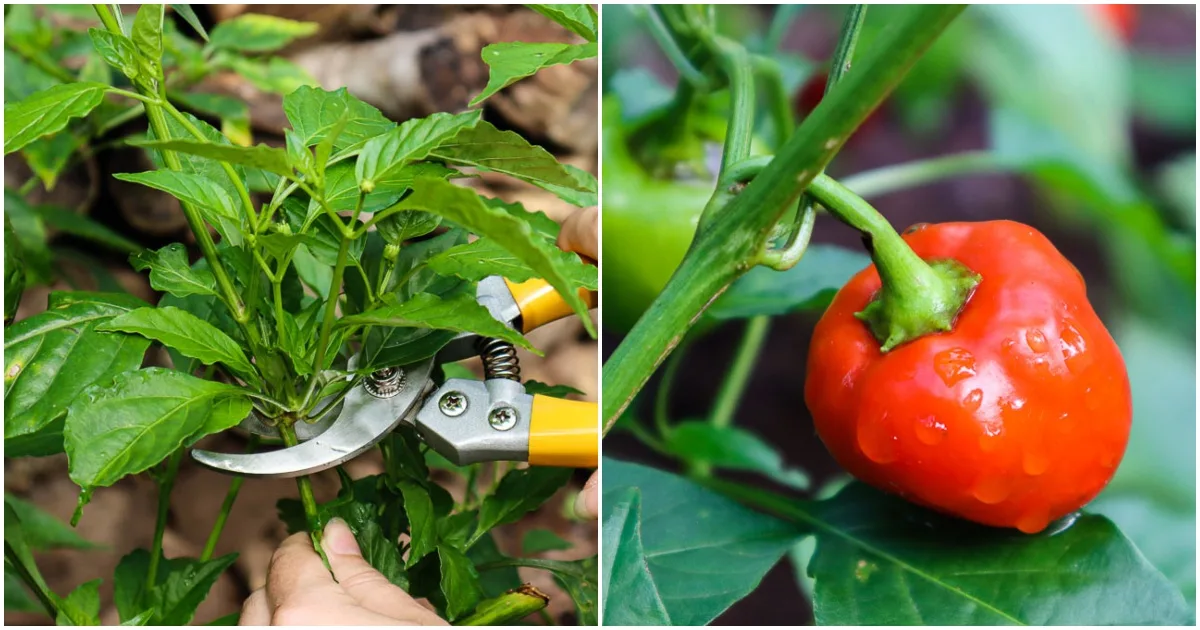
While sharpening your pruning shears and preparing to head out into the vegetable garden, there may be one plant you tend to overlook – peppers.
Whether you’re growing a large, mild pepper variety or something small and punchy, a quick prune can improve the growth of your plant and ultimately, your harvest throughout the season.
Is Pruning Peppers Necessary?
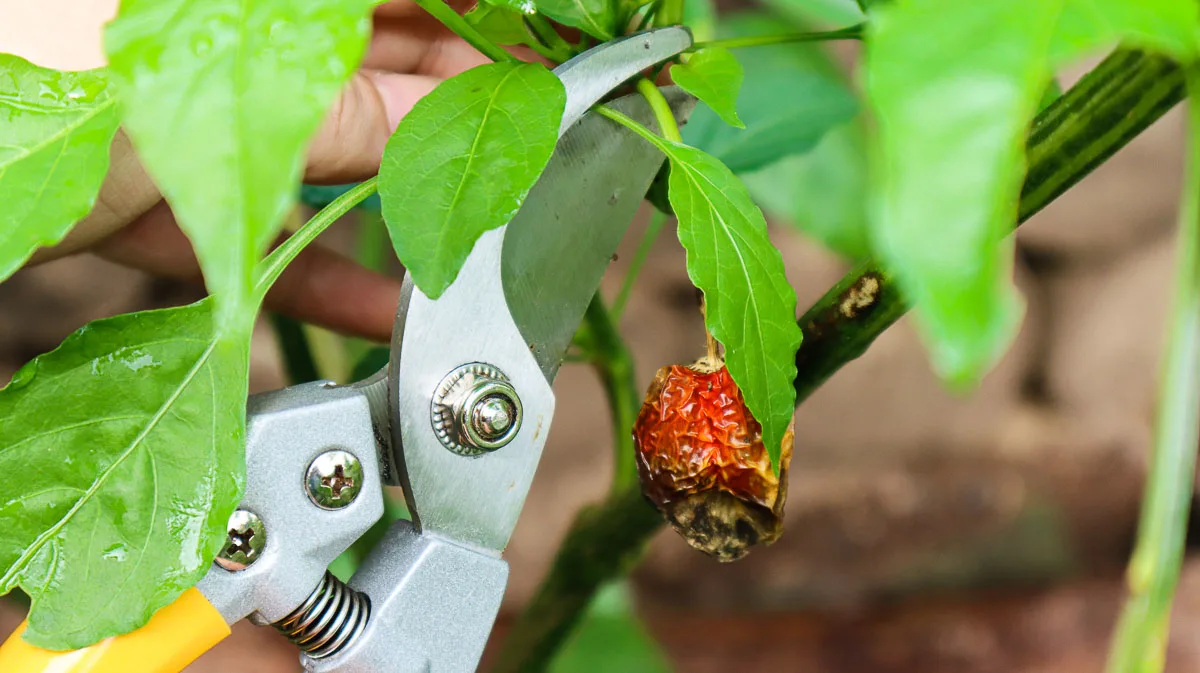
Pruning is one of those tasks that gardeners continue to argue over. Some believe that plants have been growing without our help for centuries and that they do just fine without the extra trim. Others feel it is vital for growth and health and that it absolutely cannot be missed.
These two extremes each have some truth to them, but neither is wholly correct.
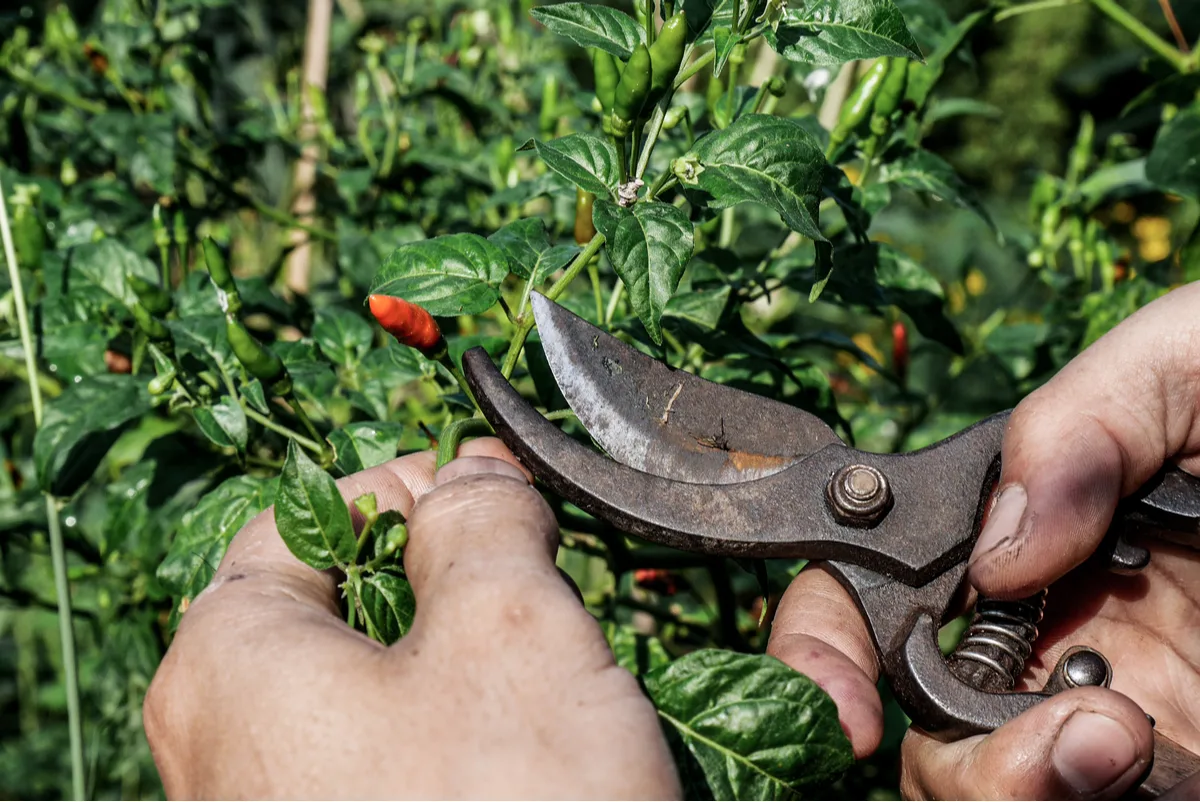
Yes, pruning is not completely necessary. Your peppers will still grow and produce fruit without pruning throughout the season. However, that doesn’t mean you should overlook it altogether.
Pruning does offer a number of benefits for your plants, including:
Improving Airflow:
Areas of dense leaf growth can lead to the proliferation of fungal diseases, especially in humid climates. Pruning extra leaves and stems will improve airflow, limiting this risk.
Limiting Risk of Pests and Diseases:
Any damaged leaves or stems are more vulnerable to pest and disease damage that can then spread to the healthy parts of the plant. The same can be said for lower leaves and stems that touch the ground, sitting in water and attracting disease.
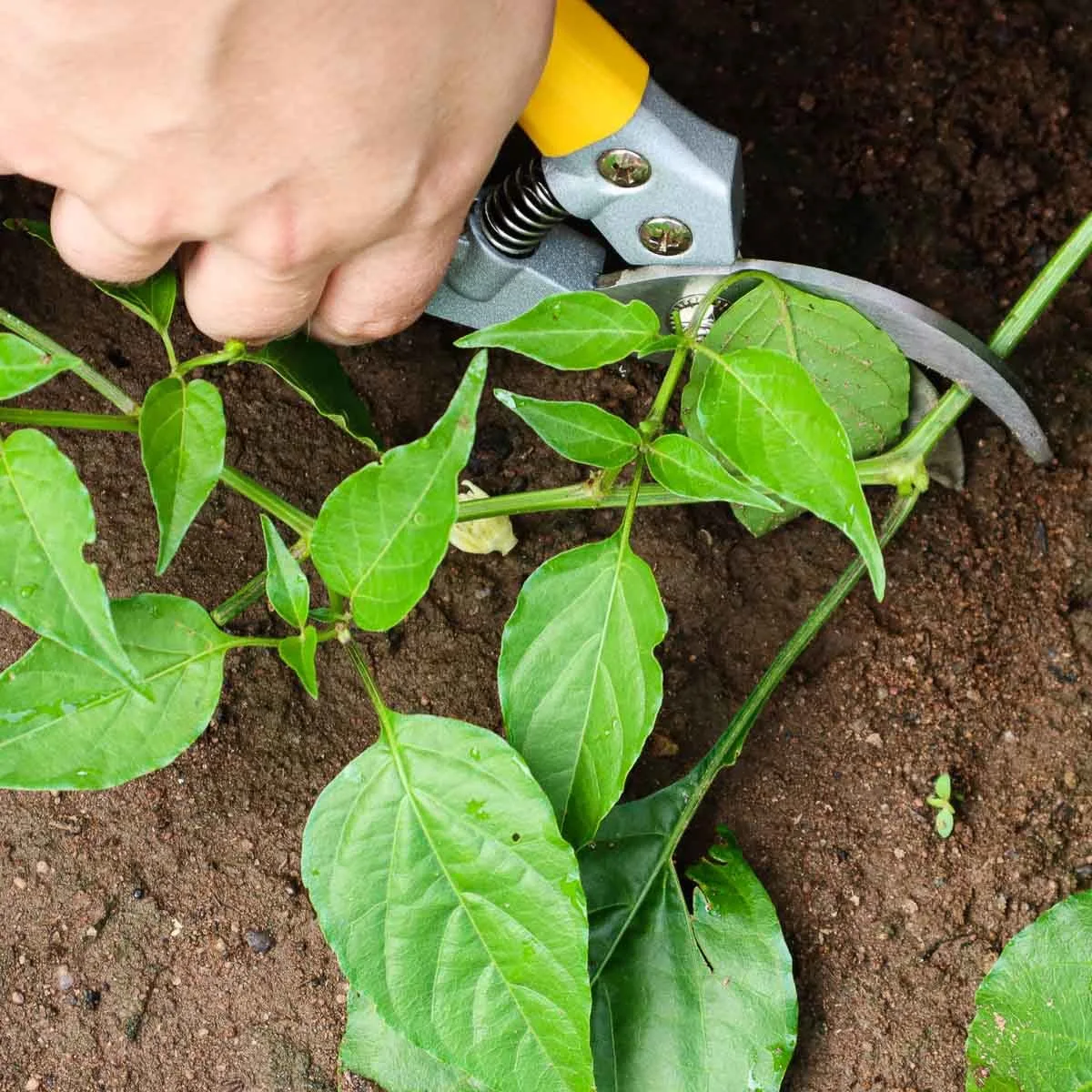
Improving Growth:
In the early stages of growth, a light prune can encourage branching, producing more leaves and stronger stems to increase yields. Later on in the season, if growth becomes spotty or leggy, pruning back will encourage new and stronger growth.
Better Yields:
Pruning can lead to better fruit set by redirecting the energy of the plant toward fruit production. At the end of the season, pruning can also help ripen the last of the fruits to finish off the season on a high note.
Whether or not you choose to prune is up to you. But, considering the many benefits, it’s definitely something to consider.
When To Prune Peppers
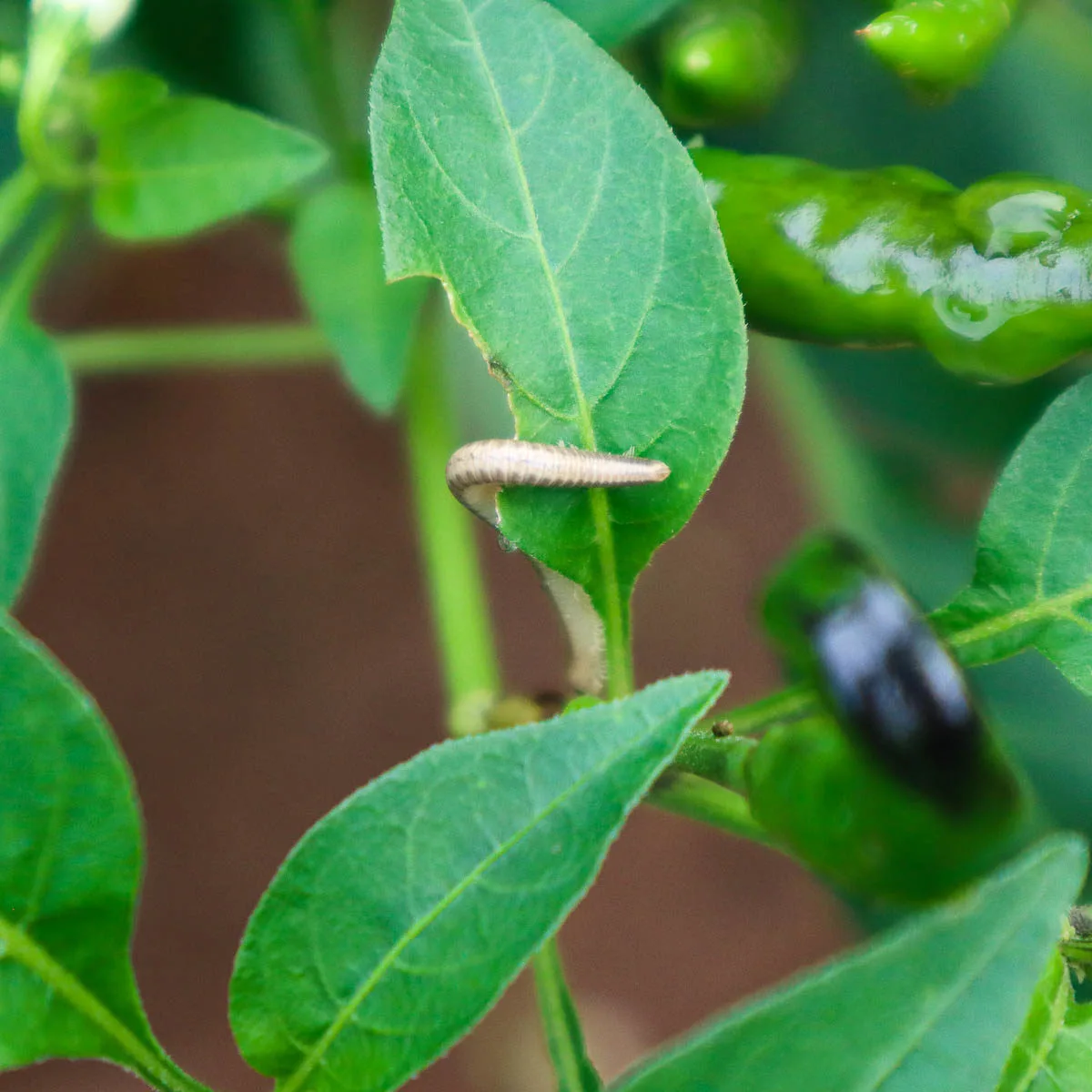
When you prune your peppers will depend on the level of pruning you want to do, as well as the performance of your plants.
Early season pruning occurs soon after the plants are established to encourage quicker and better growth. Mid-season pruning can improve leggy growth, control pests and diseases and better your yields if production is slow. An end-of-season prune is also useful for slow fruits that need ripening before the first frost sets in.
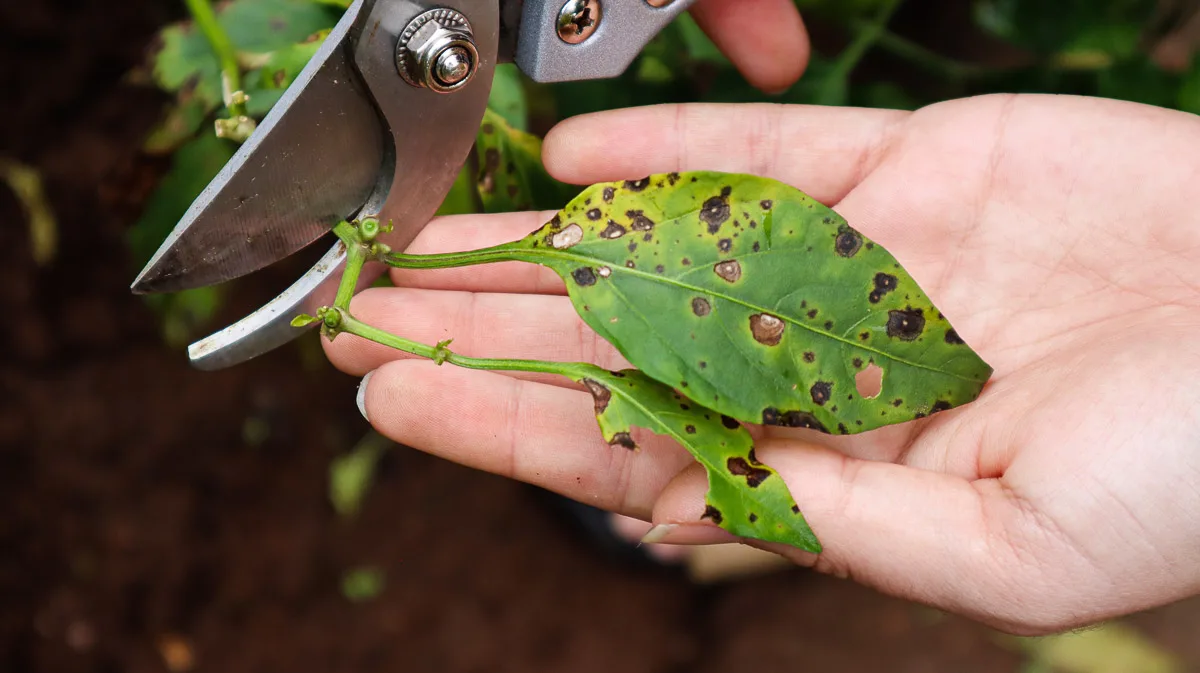
You can do one of these tasks, or all of them. It’s all about assessing the needs of your plant and doing what’s best.
How To Prune Pepper Plants & 6 Times You Should
1. Pinch Young Plants
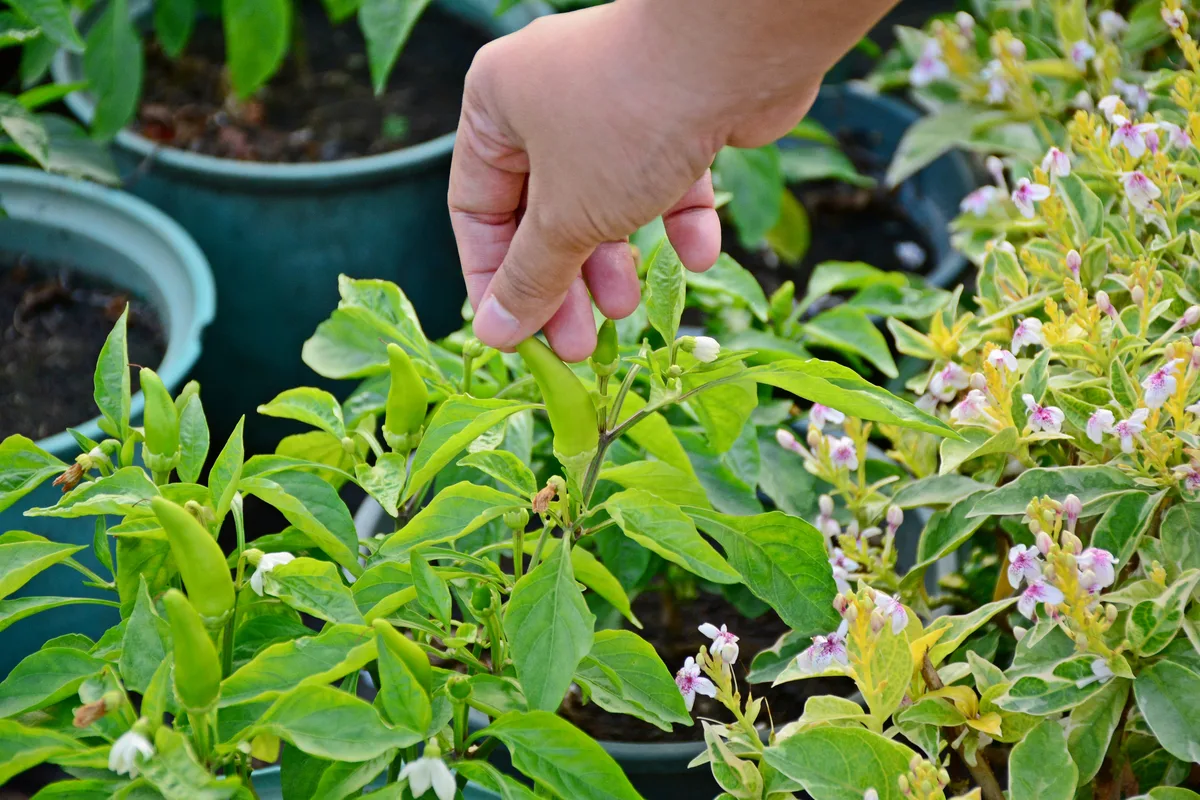
The more branches you have on your pepper plant, the more potential it has to produce fruits. One way to encourage more branching is by pinching in the early stages of growth, soon after planting.
Removing the tip of the central stem produces hormones in the plant that encourages new growth, turning the main stem into two healthy branches. This needs to be done early in the season to produce a dense plant from the base that is not too top-heavy.
Wait about a week after transplanting for the roots to establish before pinching off an inch of the central stem with your fingers or a pair of pruning shears.
2. Remove Early Blooms
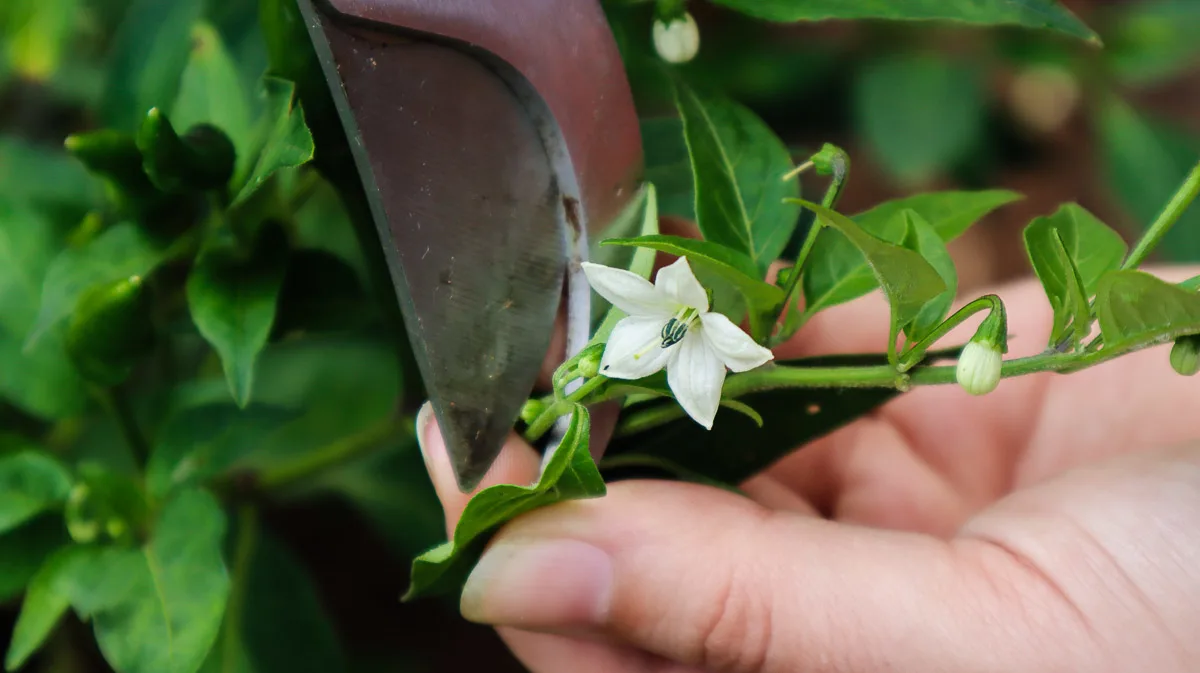
Removing blooms to increase yield might sound counterproductive. However, sacrificing a few early flowers will direct the plant’s energy toward continuing strong root and stem growth, improving later fruiting.
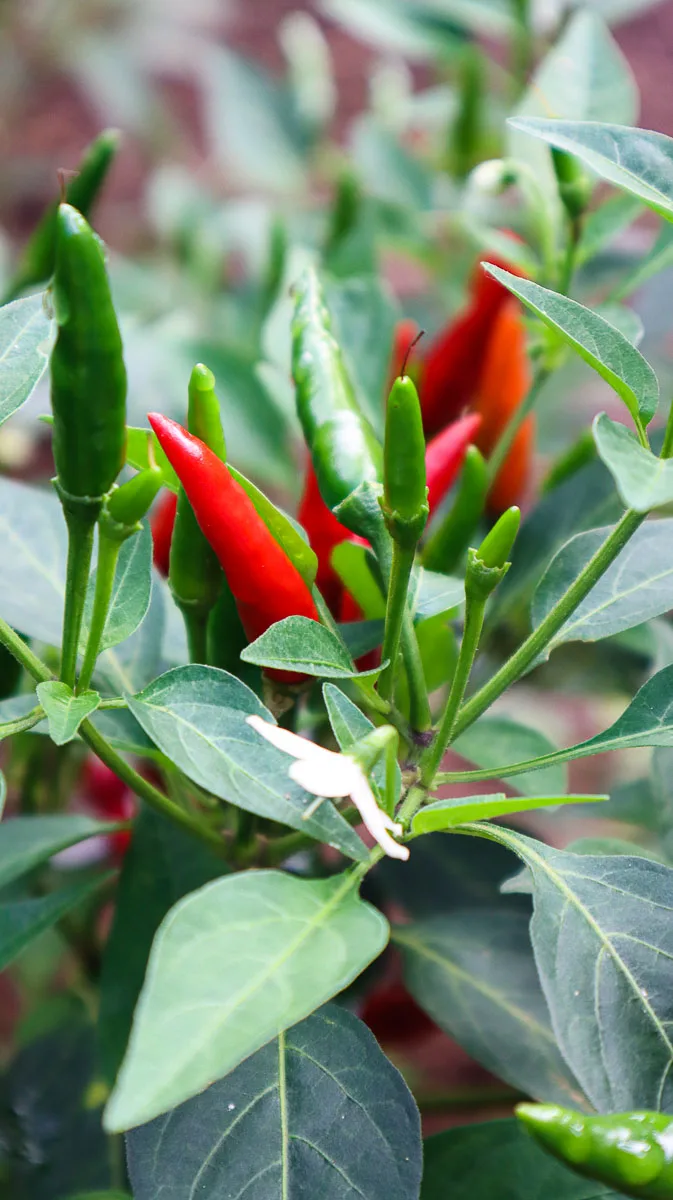
Only do this for the first few weeks after planting to make sure the plants are well-established. After that, they should have a strong enough root system to produce healthy fruits from the rest of the flowers of the season.
3. Remove Branches And Leaves That Touch The Ground
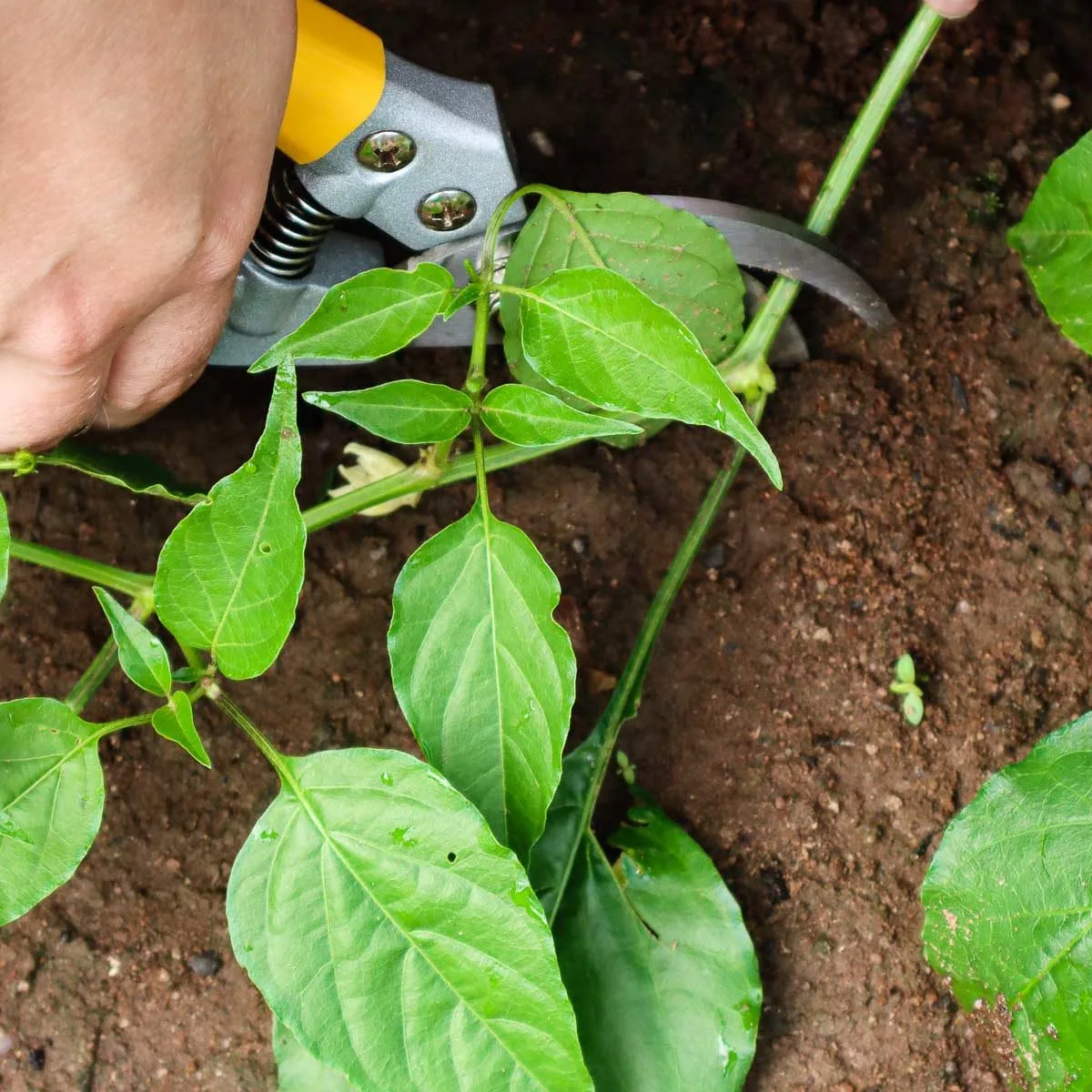
As the plant starts to grow taller, you may notice some lower side shoots that don’t get much sun. Trim these off in the early stages of growth as they won’t help much with photosynthesis and are more vulnerable to pests and disease damage.
The same can be done later on in the season if lower branches begin to droop and touch the soil. Any leaves or stems left sitting on the soil will begin to rot, making the plant more vulnerable to disease. And, these branches provide easy access to the plant for any soil-borne pests.
Removing them at the base won’t negatively impact growth and will increase airflow at the base of the plant, improving health in the long run.
Related Reading: 35 Pepper Plant Companions (& 4 To Avoid)
4. Remove Damaged or Diseased Leaves
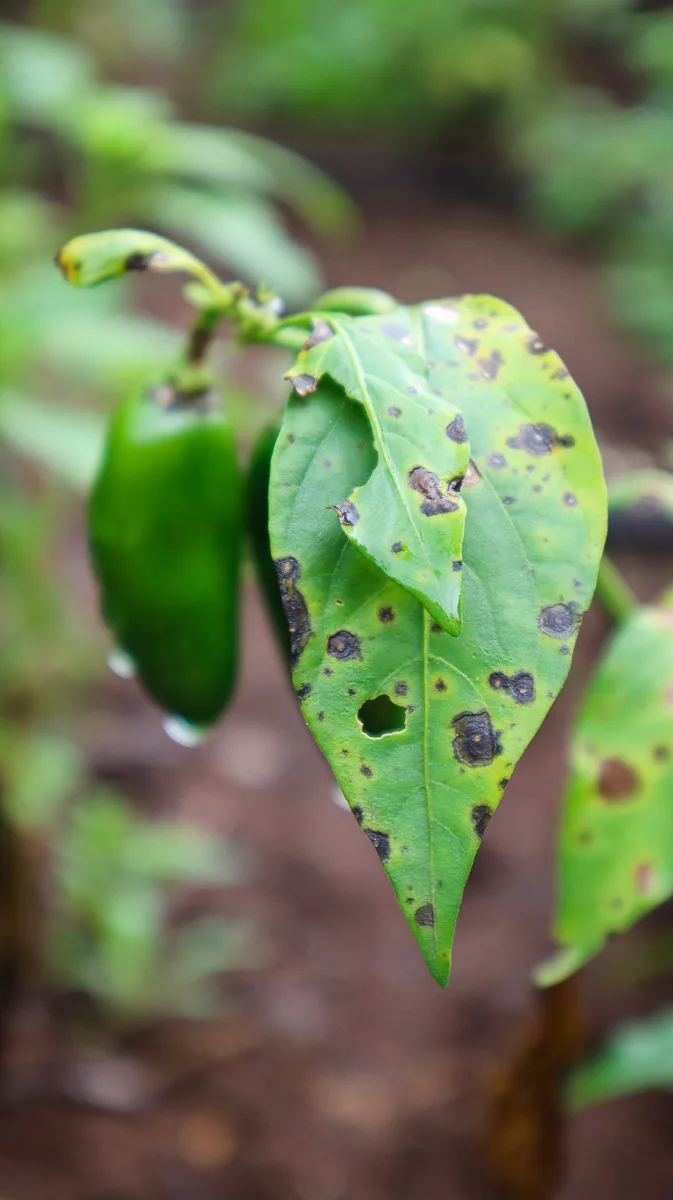
Peppers are susceptible to a few diseases that, once established, are incredibly difficult to get rid of. Besides prevention, control as soon as any signs of disease appear is key in securing your pepper harvest before the infection takes over.
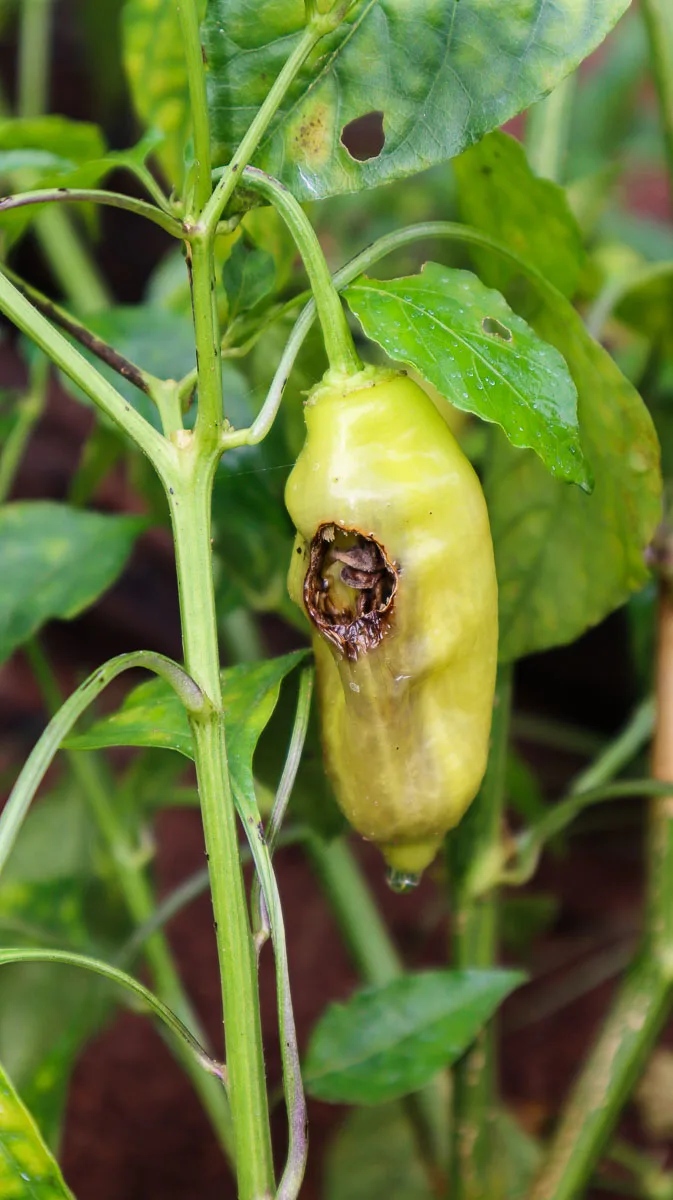
Continually check for signs of disease and prune away any affected areas immediately. Make sure you clean your shears afterward to avoid spreading the problems to other plants. The same can be said for damaged leaves as these are more vulnerable to pest infestation.
5. Trim Suckers Early
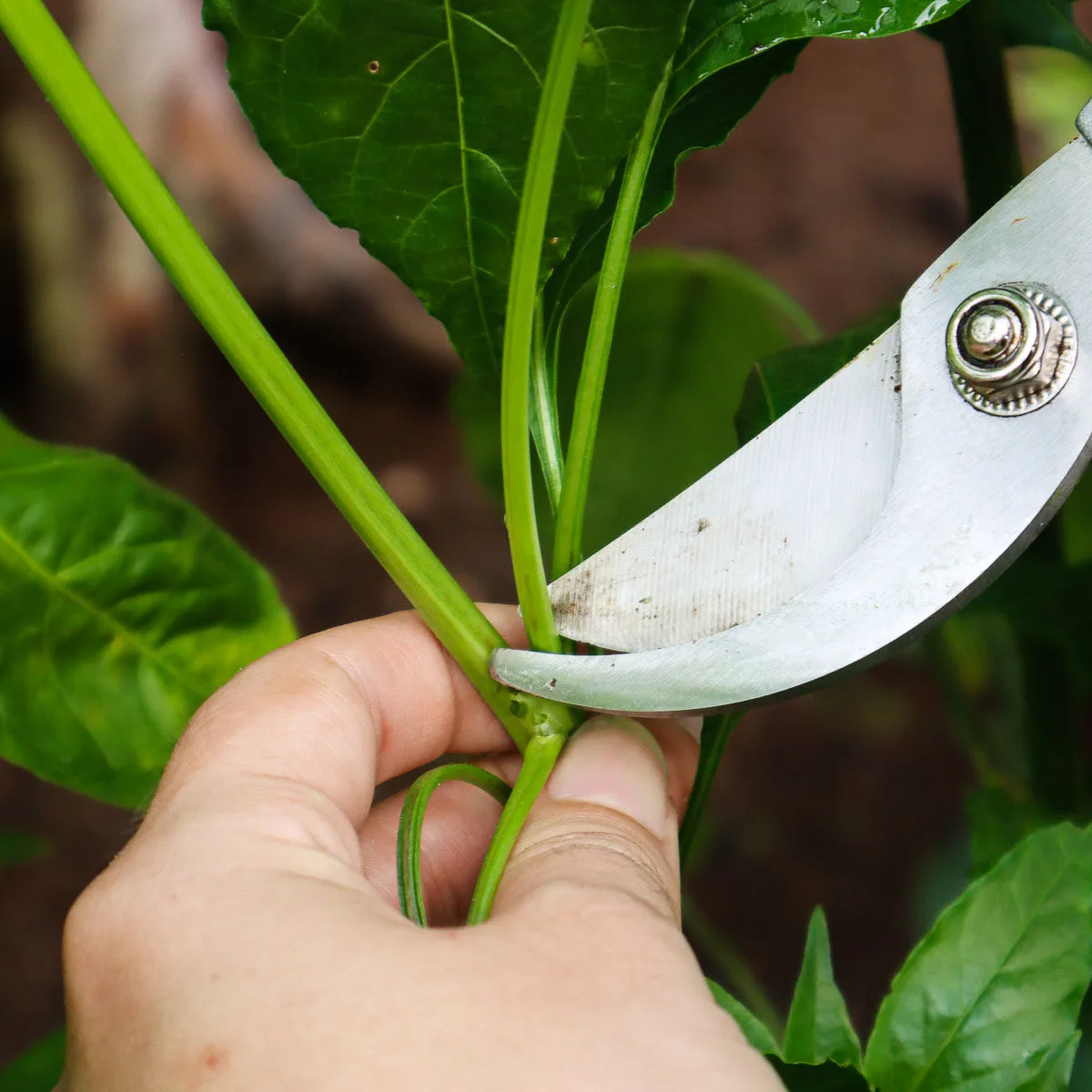
Large pepper varieties, much like tomatoes, produce suckers. These are small shoots between stems emerging at a 45° angle that eventually turn into full stems. But, these suckers draw energy away from fruit-producing branches and overcrowd the plant, leading to a higher risk of fungal disease.
Remove a few suckers as they appear to keep growth balanced and stop the plant from becoming top-heavy. The sooner you remove them, the easier they are to snap off with your fingers. Alternatively, trim them at the growth point with your pruning shears.
Make sure you know what kind of pepper you’re pruning before you start as no suckers should be removed from small pepper plants. This will only limit your harvest rather than improving it.
6. Top The Plant
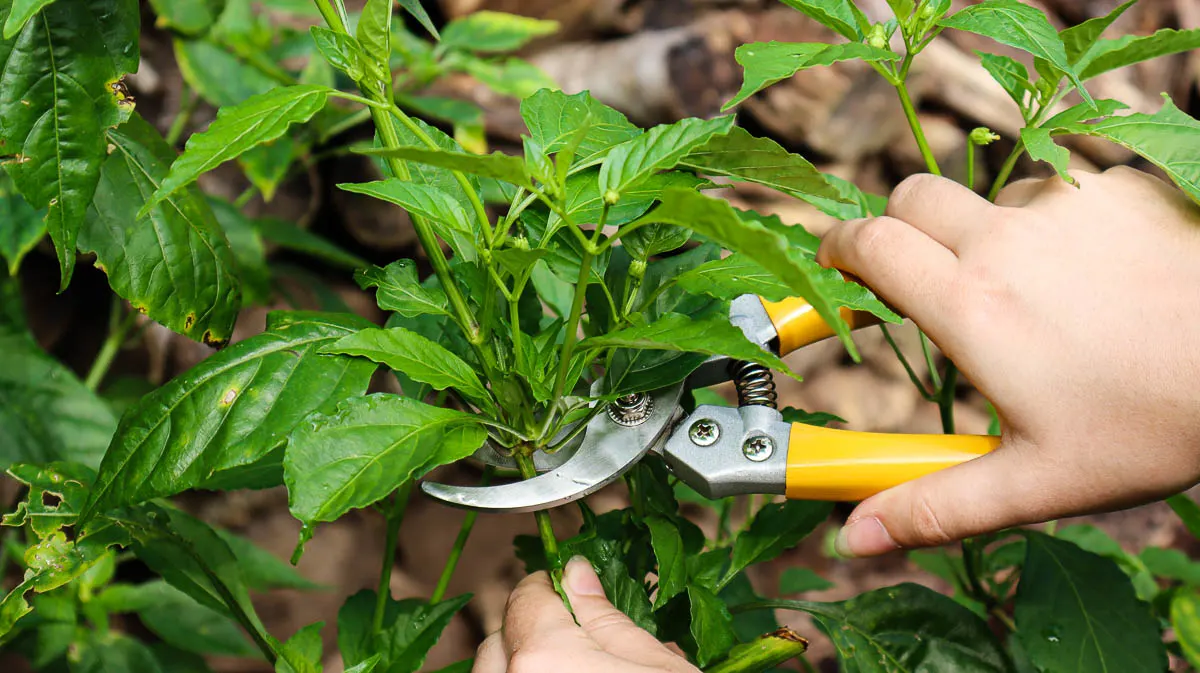
At the very end of the season, around a month before the first expected frost date in your region, pruning can help the remaining fruits ripen to get the largest harvest possible. This is known as topping the plant and it involves trimming a few inches off each of the branches. (This should also be done with tomato plants.)
By removing this extra growth, all the remaining energy goes into filling out and ripening the remaining fruits on the plant.
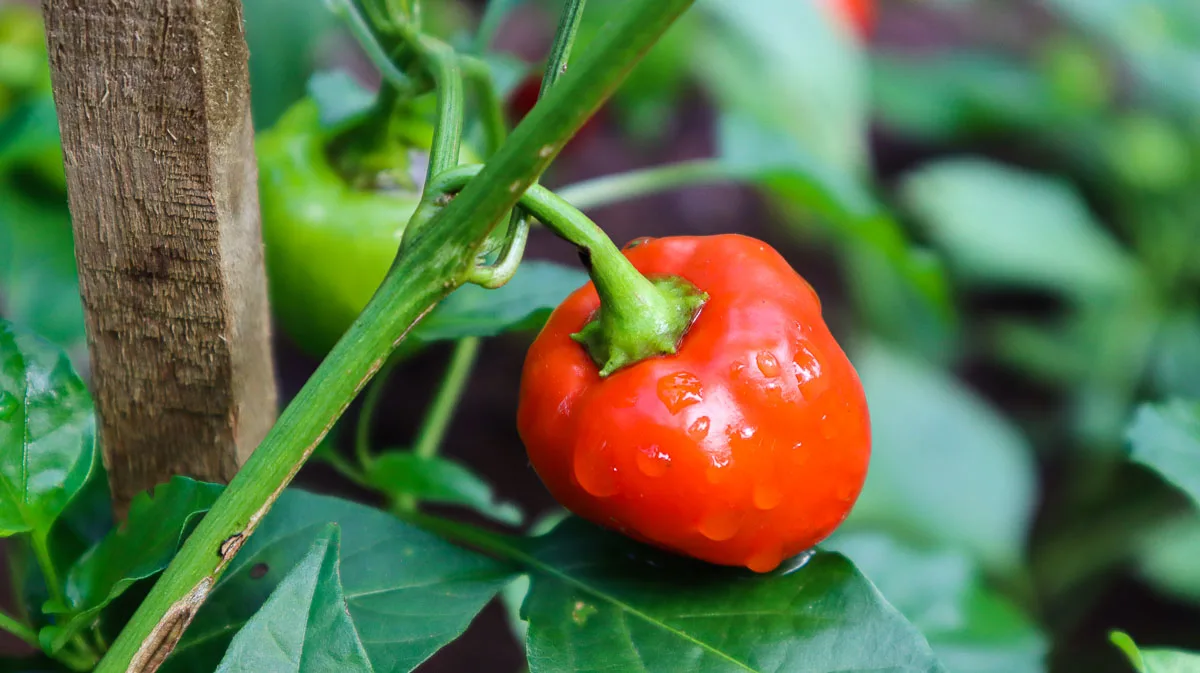
After trimming 3-6 inches off each stem (depending on the variety), remove any blooms that have not yet begun to develop or fruits that won’t ripen before the end of the season. This will ensure your last fruits are as delicious as they could possibly be.
Read Next:

Get the famous Rural Sprout newsletter delivered to your inbox.
Including Sunday ramblings from our editor, Tracey, as well as “What’s Up Wednesday” our roundup of what’s in season and new article updates and alerts.


